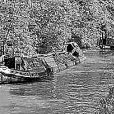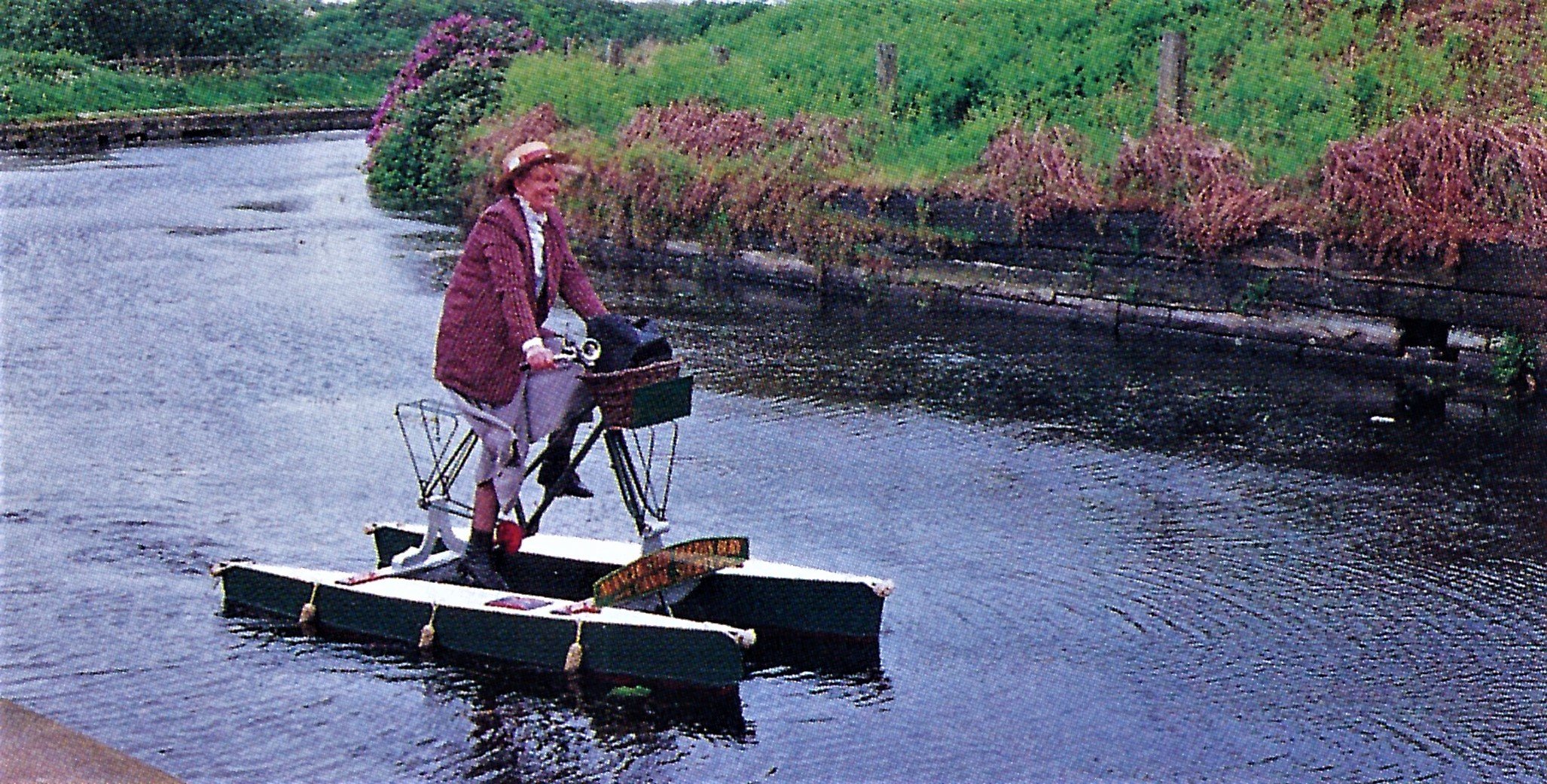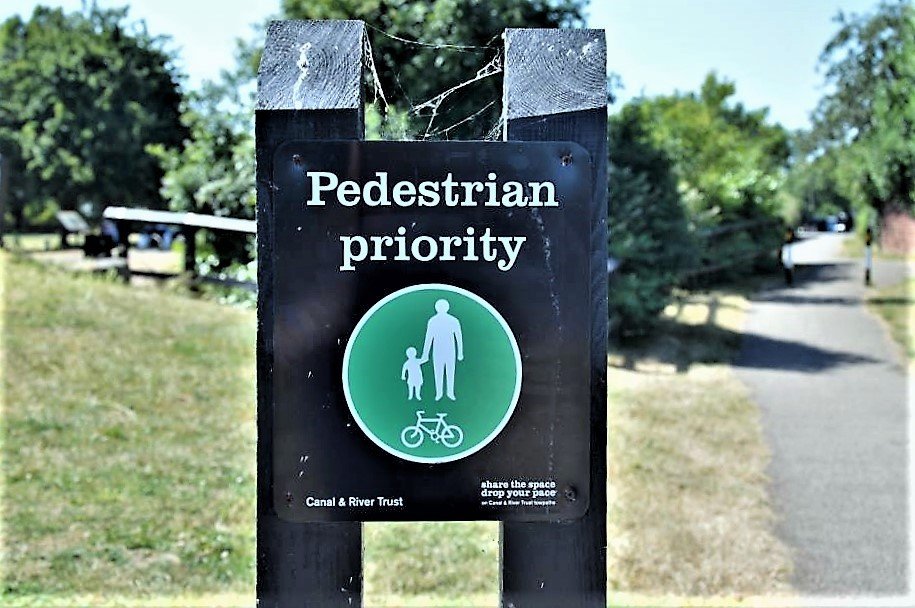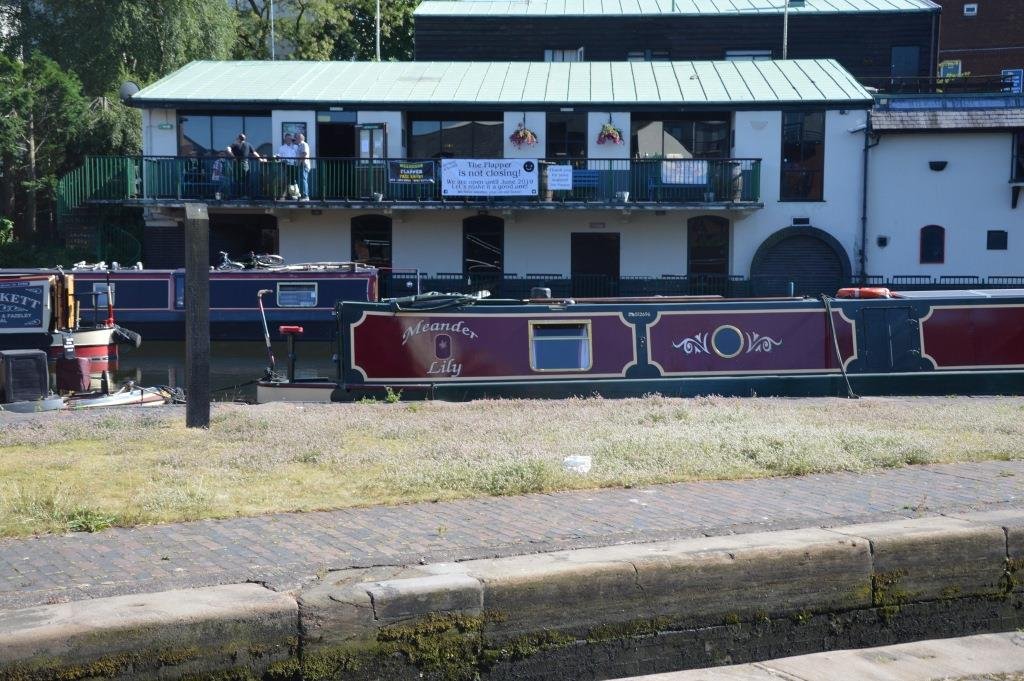-
Posts
3,397 -
Joined
-
Last visited
Content Type
Profiles
Forums
Events
Gallery
Blogs
Store
Everything posted by Heartland
-
Fred Dibnah dubbed the experimental cycle boat tried on the Manchester, Bolton & Bury Canal, the Navigator, in 2000. John Fletcher's image of the trial may well be an incentive for others to try.
-
This discussion thread has already mentioned the common "near miss" cases where under Health & Safety Regulations the issue must be of concern to the CRT. A key aim of this post has been to make cyclists, the CRT and other waterway owning authorities more responsible. Whether it has fallen on deaf ears will remain to be seen.
-
I do not think that any discussion of this nature should descend to any anti cyclist rant. The main question remains as to what CRT can do and have done. CRT appear, if I am not mistaken, to have done much to encourage cycling on the towpaths, without fully understanding the implications of that policy. Without some form of control, be it a licence or physical barriers, or both, cyclists appear to be free to do as they please. Those that care are careful with others, those that do not care just treat all others with varying degrees of contempt. Sadly the latter group, at present vastly out number the former. But as said the problem is not just confined to the towpath, but is found on the footpath and pedestrian areas in towns, cities and even out of town areas. In Birmingham we have a pedestrian area located between Victoria Square and the New Library, where building works has restricted the pathways there for some five years now. There are signs erected asking cyclist to dismount. These are very large signs at each end of the restricted area. It is probably fair to state some 95 % of cyclists using this stretch ignore the signs. For the walkers the inconvenience of a cyclists passing by in a tight spot ranges from mild to major depending on whether the pedestrian is aware of the pass or suffers torn clothing on the times the rider misjudges the distance. On the towpath, there are many features that relate to the working and mooring of boats. Such features such as mooring spikes, ropes and bollards are part of the working waterway and essentially part of that character. Where such exist any cyclist passing through should dismount. The fact that most do not appears to be part of the belief that it is acceptable for it to be done. If this belief persists other users of the waterways will continue to suffer and CRT will be culpable of allowing such a situation to remain.
-

Building Britains Canal's - Sabatage at Wolverton!
Heartland replied to 1st ade's topic in History & Heritage
I had a look at the Morning Post account which reproduced the Rolls Court proceedings for January 17th 1835. The lawyer for the LBR a Mr Pemberton argued the case for the LBR stating the wooden bridge was to be used for moving earth from the southside of the canal to the north side and a valley there. Piles were to be put into the hilly side of the water. A temporary bridge was erected on 8th November 1834, and a permanent bridge was planned. The GJC objected to the LBR right to erect the bridge or bridges. The LBR went ahead with the other bridge and boats passed under the bridge with ease as before. The GJC pulled down this bridge and the LBR filed a bill on January 12th 1835, the GJC replied with affidavits on 16th January. The driving of piles had not apparently injured the canal. Sir Charles Wetherell for the GJC noted the carting of large quantities of earth (1,000,000 cu yards) had never been contemplated by the canal company. He acknowledged the LBR had the perfect right to erect a permanent bridge for their trains, but no right for a temporary one. It may have been cheaper for the contractor to do so , but mr Wetherall wanted to know why the permanent bridge had not been made, especially as the weather had been kind in the summers of 1833 and 1834. The piles it was also said had damaged the canal. So this was an early test case for the respective might of railways and canals. The Judge deferred judgement but granted the injunction the next day. The very profitable speculation, which the learned Judge, may have had shares in, was evidently a deciding factor! -
In view of declining CRT finances, it would be reasonable to make an charge for a licence. Central Birmingham has become a crossroads of cycling routes and is perhaps the reason for the concentration to be found there. These routes include the Birmingham & Fazeley and links to the Warwick & Birmingham, the BCN main lines and the Worcester and Birmingham Canal. The numbers of cyclists that meet here, as well as the option for cycle hire, have increased in recent times aided by the opening of the towpath barriers.
-
-
I notice the sign at Trent Lock has wording that is quite specific. Pedestrians have priority over cyclists. Such a wording does not stop them remaining mounted, though if the towpath is busy they should dismount and that also goes for locks and this is also the case at Cranfleet Lock on the Trent.
-

Building Britains Canal's - Sabatage at Wolverton!
Heartland replied to 1st ade's topic in History & Heritage
I have a suspicion that this legal decision set a precedent for other railway companies to build temporary structures across canals. In BCN records there are instances of canals being stopped, or navigation restricted, to enable construction of railways. Railway bridges varied in design and their construction was also dictated by the width of the waterway. Sometimes the canal had to be diverted to enable the railway to be made, but this event, of more complicated infrastructure change, was often dictated by the act of parliament and the surveys. Whilst Wolverton was an early test of canal company resolve, There were earlier railways. It would be of interest to see how the Liverpool & Manchester Railway built their bridge over the Mersey & Irwell Navigation. -

Building Britains Canal's - Sabatage at Wolverton!
Heartland replied to 1st ade's topic in History & Heritage
Alan Faulkener describes the incident in his Grand Junction Canal Book (D & C 1972). referring to Stephenson (presumably Robert) The railway wanted to build a temporary bridge over the Grand Junction at Wolverton, which meant driving piles into the canal banks. The Grand Junction disputed the right to erect this bridge. Stephenson assembled a strong workforce and began building the bridge on the night of 23 December 1834. They worked non stop and had finished this bridge midday Christmas day. Thomas Lake, the northern district engineer, came to this bridge with a strong body of canal employees and proceeded to demolish the bridge completely. The matter was settled in the Court of Chancery when the railway obtained an injunction to prevent the Grand Junction from destroying any of the railway works. -
There are already a few high rise flats by the Crescent and just by the Flapper is Kingston Row with the heritage buildings there. Putting more private accommodation here may well make this mooring spot unattractive to boaters. Sad if it happens...
-
It is nice to see boats using this part of the canal. The BCN Old Main Line, in general is worth the diversion from the New Main line, that many boaters prefer to use. There is also the various heritage features, such as passing over the Stewart and Groveland Aqueducts, travelling through the Brades, the site of a former steelworks.
-
The Canalside public house in Birmingham known now as the Flapper, a popular music venue, has banners up stating that it is not closing, but the lease will end next year.
-
I noticed a pair of launches moored on the Trent near Trent Lock (Erewash), they were part of a gathering this weekend on the Soar, today and Shardlow tommorrow. It is nice to see these craft out and about. I wonder if any Abdela & Mitchell craft survive.
-
I am not keen to organise canal walks in certain areas now, and in fact this years BCN "walk" is a visit instead. Last year walking along the old BCN main line at Spon Lane should have been cyclist free as the towpath was closed beyond through motorway refurbishment yet it did not stop the cyclists who thought they knew better. On the RCHS Wrexham Weekend in May there were fewer cyclists on the Ellesmere where we were and anyway a group of 60 plus was a barrier to the most ardent speed merchant. Speed by cyclists is definitely the concern walkers and boaters have. As a collective the concern of being hurt or being forced into to the water is the primary worry. There are long stretches of towpath where cyclists can move safely as along as they treat others with courtesy, and most do, little of the current problems would exist. Yet there seems to be a belief of must ride at all times whether it is on a footpath, pedestrian only area or a towpath.
-
The observation made about the 18 in deep lock on the Grand Junction, I am reminded of a notice board on the Bridgewater Runcorn Branch near the Cruising Club. Here the Runcorn Branch was altered and according to the history board was made across a filled in ravine, rendering the old route available for conversion into Graving Docks. Yet when the Ordnance Survey is looked at a different story may be interpreted. The old course is to be seen on the 6 inch survey of 1873, but it linked with Big Pool and there was even a boat building yard on the pool accessed under the road bridge. How this link between Pool and Canal is important remains to be seen but clearly there would be movement to the boatyard and also the Quarry wharf. By the time of the 2nd Ordnance survey 1897, the canal had been cut through rendering the old route up for other use and part was adapted as graving docks. There are several questions that relate to this feature, one was the original route chosen to tap the water supply of Big Pool ? 1873 Ordnance Survey Cheshire 1873 Was the reason for the change down to other factors, such as the closure of the quarry. The Lancashire 25 inch of c1891 shows the change;
-
Priestley is not the best source for totally accurate histories, but it is good for following the statutes The wording definitely makes the statement that the lock was a mistake of levels, and perhaps this is where the myth came from....
-
It would be useful to know if CRT and Sustrans has made some sort of arrangement. It must be a concern that cyclists are almost immune from any action and the removal/ opening of barriers on some waterways encourages speeding. On the Railways there was the Q train that travelled problem areas with police officers on board. What is needed on canals is a Q boat.
-

European withdrawal bill effect on boating
Heartland replied to Phoenix_V's topic in Waterways News & Press
You do not have to live outside the UK - You adapt & comply with the requirements of the world you have decided to live in - it is no more than we are expecting foreigners to do on coming to the UK. I agree with this sentiment. Whatever our politicians make with the final Brexit negotiations, in the face of the hostilities generated by both supporters and opposers of this historic change, Doris Day sung a song with an appropriate message "que sera sera". -
96,000 people have signed- well fitting railing may affect mooring and as has been said access to the waterway. I wonder if the railing option has been caused by cyclists forcing pedestrians to the waters edge. Now railings for a cycle lane that could be an option.
-
The CRT, bless them, have put signs on towpaths asking reminding people using the towpath to share the space. Sharing usually means being considerate for others, but for many cyclists there appears to be a different interpretation and that is they have precedence over walkers. This of course is not the view of the CRT code. Wringing a bell, or shouting to move people out of the way has little consideration for others, on a narrow path. I sat on a bench yesterday for half an hour, at Farmers Bridge Junction, by the Arena, 1715-1745 and counted the number of persons passing me Pedestrians alone - 8 Pedestrians in groups- 3 Cyclists travelling fast- 12 Cyclists travelling slow- 6 Cyclists passing each other in front of me on the narrow curved path -2 There are three bridges here and I only mention that strip of towpath by me, not those cyclists that passed over these bridges, often at speed, and along both towpaths to and from Broad Street. I suppose at this time of day this was popular for workers cycling home, yet for those that want to walk along these path, those who, in particular, choose to travel fast, is taking any pleasure from walking in an area that should be reserved for walkers, in view of the narrow towpath widths.
-
I believe the Arisaig Canal, in Scotland moved timber by water in such a fashion, taking it down through a lock into a loch, so to speak.
-
Waterways like the BCN was heavily used by short distance traffic where commodities like pig iron, coal, ironstone and limestone were moved between works on the same navigation. Congestion in the narrow cramped waterway became an issue which Telford was able to resolve through the creation on the New Main Line. Yet it was James Walker who also deserves credit for the routes he caused to be built: Tame Valley, Rushall, Cannock Extension and Netherton Tunnel. Such waterways whilst serving local needs also served for the longer distance trade. The Tame Valley was a useful conduit south for Staffordshire Bar Iron and Finished iron goods from the heart of the iron manufacturing district.
-
Myths reproduced in print and passed down from author to author has been one of the objects, members of the Railway & Canal Historical Society aim to redress through their Waterways History Group as the last RCHS president, will no doubt agree to. Construction factors are often forgotten, or ignored, by those looking for reasons as to why canals are the way they were.
-
I suppose canal heights matter mainly for the historian, Bradshaw 1832 records a host of different levels for canals and early railways. The canal from Wigan to Whittle is given as 307 ft 4in above the datum at Liverpool as Lancaster Canal property.. The rise of the Leominster Canal from Stourport to Sousnet Tunnel (recorded as not yet executed) was to be 207 ft and 22 locks whilst the Andover Canal was 184 ft and 10 inches above the Liverpool datum at Andover and only 5ft 10 in at Redbridge Lock, so the must have been a valid reason to include such data.
-
Whenever the heights of canals are mentioned it is now based on the ordnance datum at Victoria Dock, or was from 1844. Bradshaws map (1832) was based on a depth that was 6ft 10 inchws below the "sill" Old Dock at Liverpool and this has led to discrepancies in heights between the Bradshaw map and the later data quoting heights. For example Tring Summit according to Bradshaw was 405ft 6in where is now regarded as 395 od. Such a fact raises the question of determining height at the time of canal building and how measurements changed with the ordnance survey.








